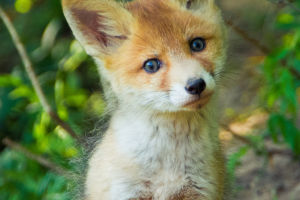
Tiger, one of the most majestic and elusive creatures on the planet, are not only known for their power and strength but also for their complex behaviors and communication methods.
Understanding the science behind their behavior and how they communicate gives us a deeper appreciation of these magnificent predators.
From their territorial markings to their unique vocalizations, tiger have developed sophisticated ways of interacting with their environment and each other!
The Importance of Territory
Tiger are solitary animals with a strong territorial nature. Unlike other big cat, such as lions, which live in prides, tigers prefer to roam alone. Their territories can span large areas, ranging from 10 to 40 square miles, depending on the availability of prey and the landscape. This territorial behavior is crucial for their survival, as it ensures that they have access to sufficient resources while avoiding conflict with other tigers.
Male tiger, in particular, establish large territories that may overlap with the territories of several females. These territories are marked with scent markings, feces, and even scratch marks on trees, signaling to other tigers that the area is claimed. The scent marking serves as a form of communication, warning other tigers to keep their distance and avoid unnecessary confrontations.
Roars and Vocalizations: The Tiger Voice
Tiger are known for their iconic roar, which can be heard up to two miles away in the wild. But why do they roar, and what does it mean? Roaring is a vital form of communication for tiger, used primarily to assert dominance and claim territory. It is also a way for tigers to communicate with potential mates, signaling their presence to both rivals and partners. A tiger roar is a powerful tool that conveys strength and helps establish boundaries.
In addition to roaring, tiger produce a variety of other vocalizations, each serving a specific purpose. They growl and snarl when they feel threatened or during encounters with rivals. They also have a low, rumbling purr, though it is quite different from the purr of domestic cat. This purring is often heard during moments of contentment, particularly when a tiger is resting or grooming.
Body Language and Silent Communication
While tigersdo use vocalizations to communicate, much of their interaction occurs through body language. A tiger’s posture, ear position, tail movements, and facial expressions all play a role in communication, especially when it comes to interactions with other tiger. For instance, a tiger might raise its tail to signal aggression, or it might lower its head as a sign of submission during a confrontation.
During courtship, female tigers often display body language that signals receptiveness, such as swishing their tails or making specific vocal sounds. This non-verbal communication is crucial during mating season, as it helps tigers navigate the delicate balance of attraction and territorial defense.
Hunting Strategies: Cooperation or Solitude?
Tigers are solitary hunters, using stealth and power to catch their prey. Unlike wolves or lions, who hunt in packs, tigers rely on their individual skills to stalk and ambush animals such as deer, wild boar, and even buffalo. Their powerful jaws, sharp claws, and incredible agility make them expert predators. The tiger’s hunting strategy is typically a blend of patience and explosive energy, waiting for the right moment to launch a fast and powerful attack.
While tigers hunt alone, their behavior can be influenced by the presence of others. For example, a female with cubs may have a different approach to hunting, choosing areas with more cover and ensuring that she remains vigilant for threats. Male tigers, on the other hand, tend to hunt in areas that provide a strategic advantage, often focusing on larger prey.
Cub Development and Maternal Care
Tiger cubs are born blind and dependent on their mother for survival. The bond between a mother tiger and her cubs is incredibly strong, with the mother providing everything from nourishment to protection. As cubs grow, they begin to learn vital skills from their mother, including how to hunt and mark territory. The first few years of a tiger’s life are spent under the close care of their mother, who provides the guidance they need to become skilled predators.
The role of a mother tiger is crucial to the survival of her cubs. She teaches them how to move quietly through the forest, stalk prey, and recognize the signals of other animals. Once the cubs reach a certain age, they begin to venture away from their mother’s side, but they remain under her protection until they are fully capable of living independently.
The Tiger Role in Ecosystem Communication
Tiger also communicate with their ecosystem. As apex predators, they play an essential role in maintaining the health of their environment by regulating the populations of herbivores and other animals. This indirect form of communication is vital for ecosystem balance. Controlling the population of herbivores, tiger prevent overgrazing and help maintain the health of the vegetation in their habitat, which in turn supports a wide range of other species.
Dear Lykkers! The science of tiger behavior and communication reveals that these animals are far more complex than their fearsome roars might suggest. From their intricate vocalizations to their silent body language, tigers communicate with remarkable precision and purpose. Understanding their behavior helps us appreciate their role in the wild and highlights the need for conservation efforts to protect these majestic creatures and their habitats.
The tiger’s behavior is a testament to nature’s ingenuity, where each action—whether vocal or silent—plays a part in ensuring their survival!
Behind the Roar: Understanding the Behavior of Tigers | Lions Tigers & Bears Animal Sanctuary
Video by Lions Tigers & Bears Sanctuary


